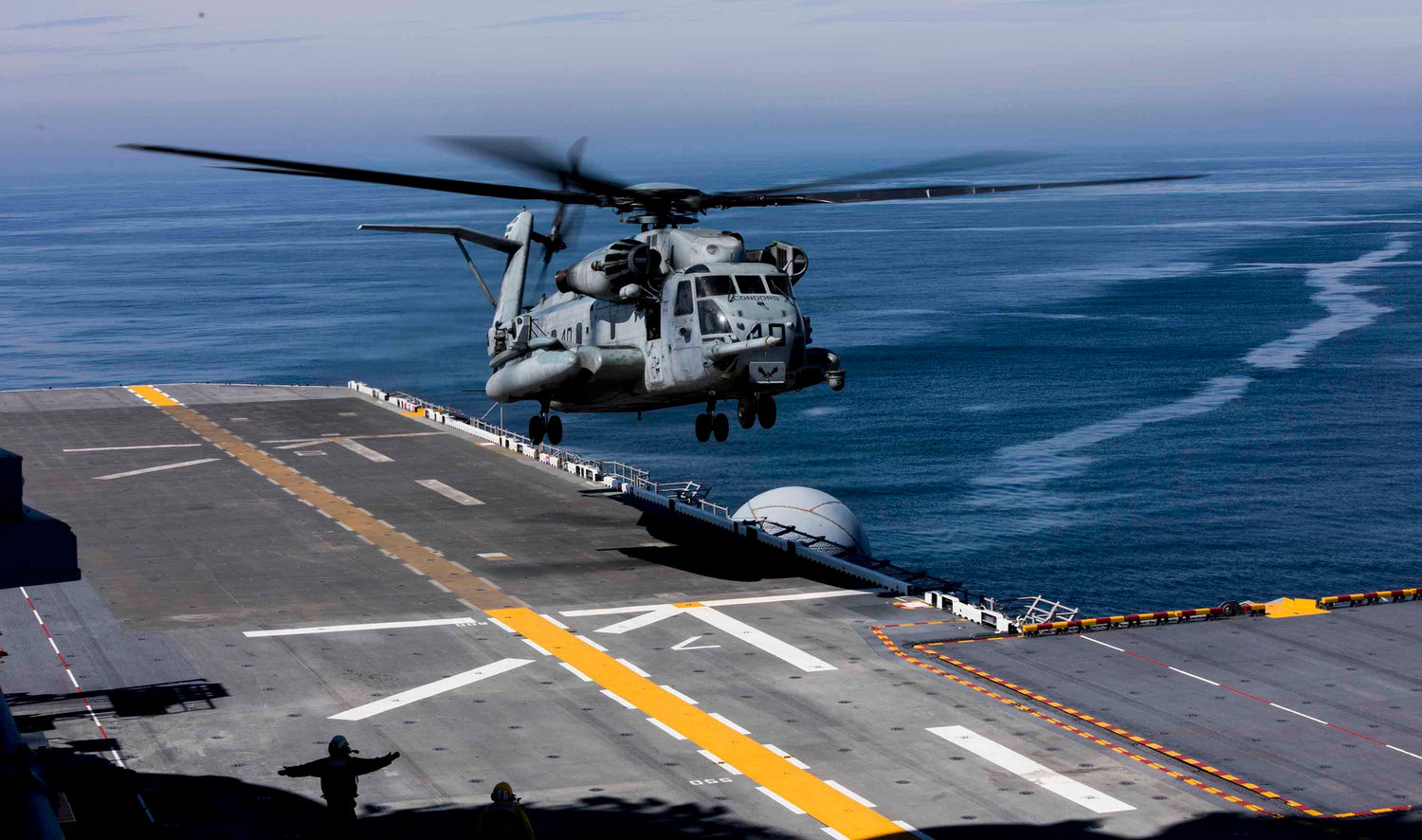ATANTIC OCEAN (Mar. 11, 2019) A CH-53E Super Stallion helicopter, assigned to Marine Heavy Helicopter Squadron (HMH) 464 lands on the flight deck aboard the amphibious assault ship USS Bataan (LHD 5).The ship is underway conducting sea trials. (U.S. Navy photo by Mass Communication Specialist 3rd Class Lenny Weston).
In the early hours of February 7, 2024, the U.S. Marine Corps announced a significant and urgent search operation for a missing CH-53E Super Stallion helicopter, carrying five Marines, which was reported overdue on its flight path from Creech Air Force Base, located near Las Vegas, Nevada, to Marine Corps Air Station Miramar in San Diego, California. This incident has triggered a coordinated effort involving multiple agencies, showcasing the complexities and challenges inherent in search and rescue operations, especially under adverse weather conditions.
The CH-53E Super Stallion, known for its heavy-lift capability, is a critical asset within the U.S. military's aviation inventory, capable of transporting up to 16 tons of cargo. This includes troops, equipment, and supplies, underscoring its importance for operational readiness and logistical support. The helicopter was part of Heavy Helicopter Squadron 361, operating under the Marine Aircraft Group 16 of the 3rd Marine Aircraft Wing, highlighting the unit's role in providing aerial lift capabilities that are indispensable for the execution of Marine Corps missions.
The aircraft's journey from Creech Air Force Base to Marine Corps Air Station Miramar was part of routine operations, yet the failure to arrive as scheduled has led to an intense search and rescue operation. The coordination of this operation involves the 3rd Marine Aircraft Wing, the San Diego County Sheriff’s Department, the Civil Air Patrol, and California firefighters, including Cal Fire San Diego, indicating the broad range of resources and expertise being mobilized to locate the missing Marines and their helicopter.
The search efforts faced immediate challenges, primarily due to an atmospheric river storm affecting the region. Such storms are known for their intense rainfall and can significantly reduce visibility and operational effectiveness for aerial search teams. The San Diego County Sheriff’s Department, despite deploying a helicopter for the search, found it impossible to reach the target area, illustrating the severe impact weather can have on search and rescue operations. Instead, the department has resorted to deploying off-road vehicles, adapting to the conditions to continue the search effort.
Firefighters, responding to the last known location of the helicopter, encountered "heavy snow and winter conditions" in the Lake Marina area, near a trailhead in the Cleveland National Forest. These conditions forced the search teams to temporarily pull back, waiting for daylight and potentially better weather to reengage in the search. This aspect of the operation underscores the unpredictable and often perilous nature of search and rescue missions, where responders must navigate not only the intricacies of locating a missing aircraft but also the environmental hazards that can impede their efforts.
The disappearance of the CH-53E Super Stallion and its crew is a stark reminder of the risks faced by military personnel, even during peacetime operations. While the primary focus remains on locating and rescuing the crew, the incident also serves as a prompt for analyzing and potentially refining operational protocols and safety measures. It highlights the importance of continuous improvement in the technologies and strategies used for tracking and communicating with aircraft during flights, especially in challenging weather conditions.
The collaborative nature of the search operation, involving various branches of the military, local law enforcement, and firefighting units, demonstrates the interconnectedness of emergency response efforts. It reflects a broader commitment to safeguarding the lives of those who serve, underscoring the principle of leaving no one behind. As the search continues, the thoughts of the nation turn to the missing Marines, hoping for their safe and prompt return.
This incident will undoubtedly be analyzed in the aftermath, with lessons learned applied to future operations to mitigate the risks associated with such flights. The dedication of the search teams, working against the elements and the clock, embodies the resilience and determination characteristic of the military and emergency response communities. As this operation unfolds, it will serve as a testament to the challenges of military aviation and the unwavering efforts to ensure the safety and security of service members.




